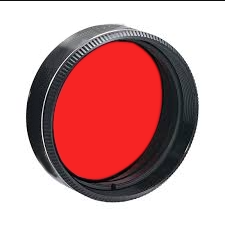Have you ever wondered what a Texas Red filter is and what it can reveal? In this article, we will delve into the world of Texas Red filters, their uses, and the valuable information they can provide. Whether you are a scientist, photographer, or simply curious about this optical tool, we will unravel the mysteries and shed light on the significance of Texas Red filters. So, let’s embark on this enlightening journey together.
1. Introduction: The Concept of Filters
In several disciplines, including physics, photography, and microscopy, filters are essential. They are made to selectively transmit or block particular light wavelengths, enabling us to see and record special features of our surroundings. The Texas Red filter is one such filter that has become well-known for its unique qualities and uses.

2. Understanding Texas Red Filters
To transmit light in the red region of the optical spectrum, Texas Red filters are optical devices. They are members of the fluorescence filter family and are frequently employed in imaging processes linked to fluorescence microscopy. The fluorophore Texas Red, which exhibits red fluorescence when activated by the proper light wavelengths, is the inspiration for the name of these filters.
3. Working Principle of Texas Red Filters
Texas Red filters operate on the basis of light transmission and absorption. Shorter wavelengths are selectively absorbed by the filter as light travels through it, while longer wavelengths, mostly in the red range, are allowed to pass. This characteristic makes it possible to see particular samples or structures that have been marked with Texas Red or another fluorophore that emits red light.
4. Applications of Texas Red Filters
Texas Red filters have numerous and varied applications. Fluorescent dyes and markers are widely used in biological and medicinal research to examine various cellular processes. Texas Red filters make it possible to see particular molecules, proteins, or structures inside of cells, giving important information about how they interact and operate.
Texas Red filters have uses in photography in addition to the life sciences. It can make objects labeled with Texasred fluorophore of a specific wavelength appear red.
5. Advantages and Benefits of Texas Red Filters
Texas Red filters offer several advantages that make them indispensable in various scientific and imaging endeavors. Here are some key benefits:
- Enhanced specificity: Texas Red filters enable for the precise observation and study of structures that have been marked with Texas Red or other suitable fluorophores by selectively transmitting red light.
- Low background noise: Shorter wavelengths are effectively blocked by these filters, lowering undesired background fluorescence and boosting signal-to-noise ratios.
- Versatility: Texas Red filters work well with other filters to provide multi-color imaging, which makes it possible to see several fluorophores at once.
- Compatibility: They are easily adaptable to various experimental setups because they are compatible with a variety of fluorescence imaging systems.

6. Tips for Using Texas Red Filters Effectively
To ensure optimal results and maximize the potential of Texas Red filters, here are some helpful tips to consider:
- Choose the right excitation wavelength:In order for Texas Red filters to function, certain excitation wavelengths must be present. To get the optimum fluorescence emission, it’s essential to choose an excitation light source that falls within the filter’s suggested range.
- Use appropriate fluorophores:When used with fluorophores that emit in the red spectrum, Texas Red filters work well. To get precise and trustworthy findings, make sure the fluorophores you select are compatible with the transmission properties of the filter.
- Control background fluorescence:Utilize the proper blocking filters and improve the image settings to reduce background noise. Your observations will be clearer and the signal-to-noise ratio will be improved as a result.
- Consider filter quality: Purchase dependable Texas Red filters of the highest caliber. Poorer filters could generate artifacts, weaken the signal, or cause fluorescence measurements to be off.
- Experiment with different exposure times:Changing the exposure time can aid in improving image quality depending on the strength of the fluorescence signal and the particular imaging circumstances. To obtain the ideal balance between signal intensity and image resolution, try out various exposure settings.
- Regularly clean and maintain the filters: The performance of the filters might be greatly impacted by dust and particles on them. To maintain consistent and dependable performance, clean the filters frequently using the right techniques advised by the manufacturer.
7. Factors to Consider when Choosing a Texas Red Filter
When selecting a Texas Red filter, several factors should be taken into account to ensure compatibility and optimal performance:
- Transmission characteristics: Recognize the transmission curve of the filter, including the precise wavelength range that it transmits and blocks. You can use this information to help you select the best filter for your particular experimental needs.
- Compatibility with equipment: Verify that the filter is compatible with the imaging device, microscope, or camera that you are using. For easy integration, make sure the filter size and mounting options fit your equipment.
- Application-specific requirements:Take into account your application’s particular needs, such as the fluorophores employed, the imaging environment, and the desired imaging depth. These elements will affect the filter specs you choose, including the bandwidth and steepness of the transmission curve.
- Quality and reliability: Choose filters from reliable producers who are known for creating high-quality optical goods. Quality filters minimize artifacts, guarantee accurate and consistent results, and last longer.
- Cost-effectiveness:The filter’s effectiveness and quality should be weighed against your financial limitations. While it is imperative to spend money on trustworthy filters, take into account solutions that offer the best value for your particular application.

8. Future Developments and Innovations
As technology advances, we can expect further developments and innovations in the field of filters, including Texas Red filters. Some potential areas of improvement and future directions include:
- Enhanced transmission efficiency: The transmission efficiency of Texas Red filters will be improved by further engineering and research work, enabling more exact isolation of the red fluorescence signal and reducing unwelcome background noise.
- Expanded compatibility:To ensure seamless integration and compatibility with cutting-edge technology, producers are working to make Texas Red filters compatible with a larger variety of imaging systems and tools.
- Multi-functional filters: Future research might concentrate on creating filters that can transmit many fluorescence ranges simultaneously but selectively. This would save time and costs by allowing researchers to observe and study many fluorophores in a single experiment.
- Customizable filter options: As additional specialized filter designs become available, researchers will be able to fine-tune the transmission characteristics in accordance with their particular experimental needs and the distinctive characteristics of their fluorophores.
Improved durability and longevity: Texas Red filters are continually being strengthened to increase their robustness and endurance, guaranteeing that they can endure demanding experimental setups and deliver reliable performance for a prolonged period of time.
